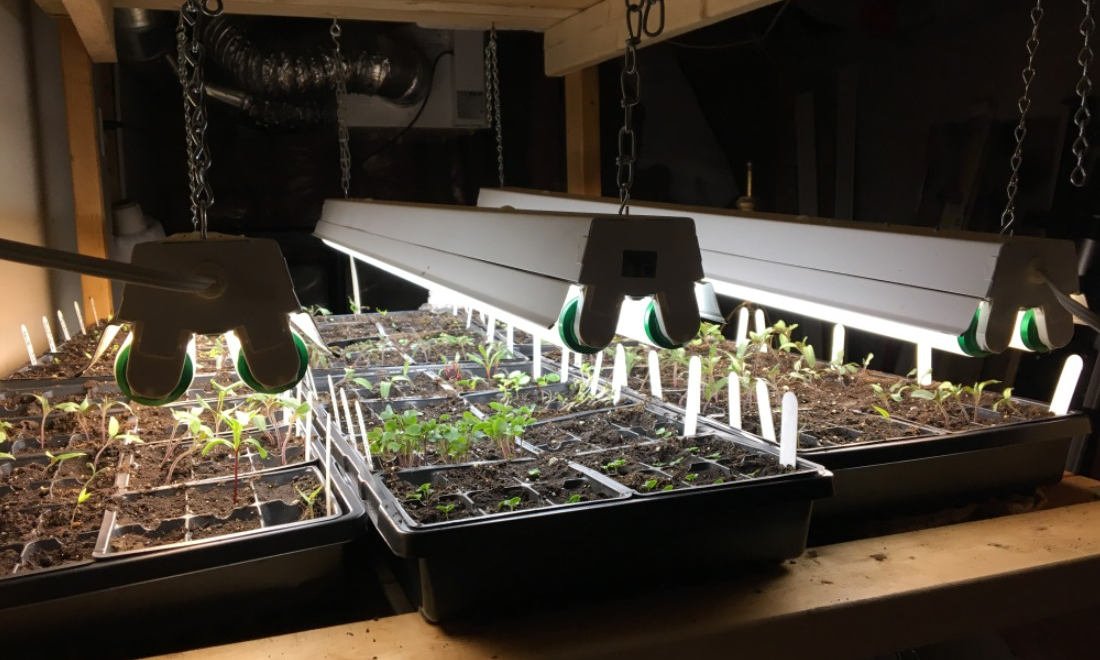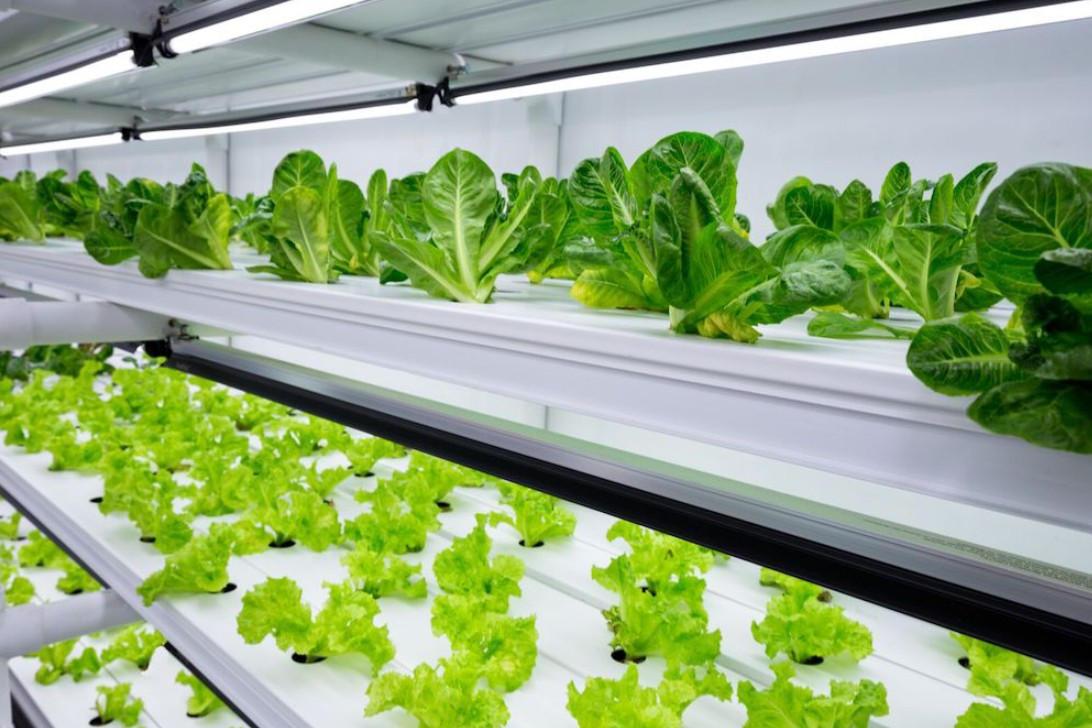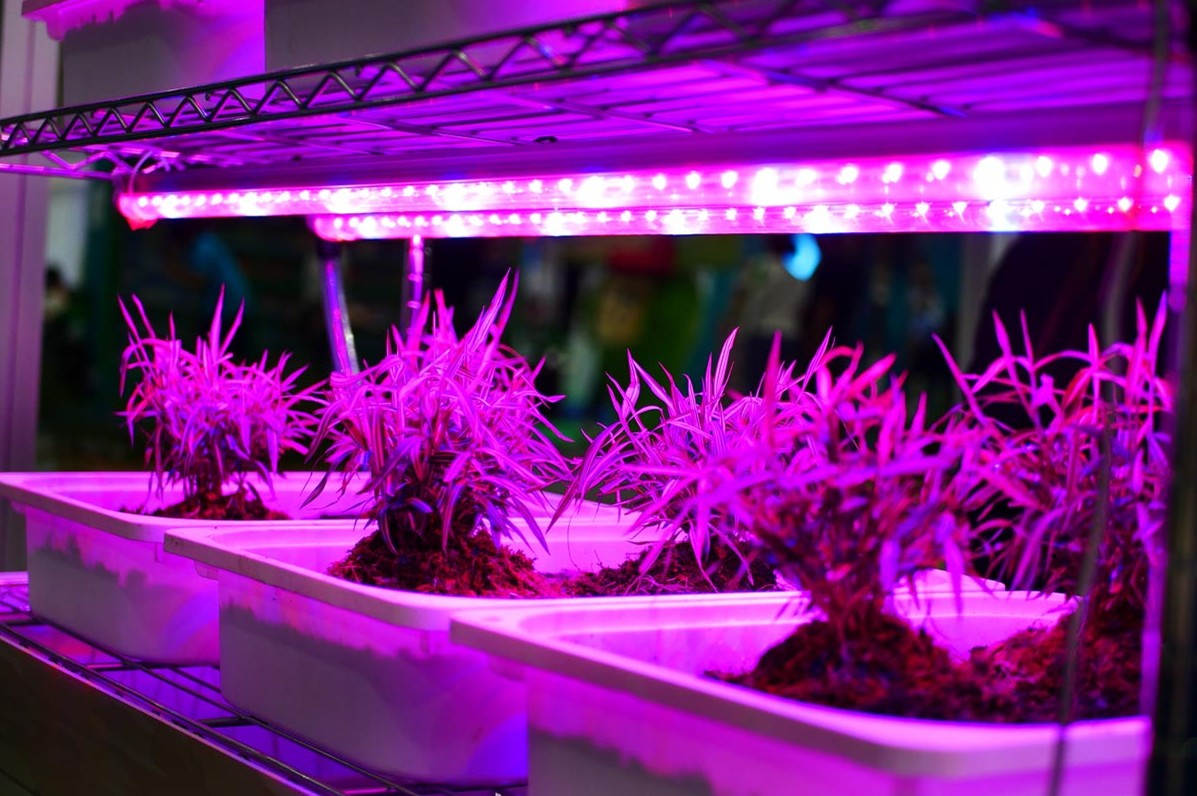No doubt, grow lights are an absolute game-changer for those of us who are passionate about gardening. Whether you’re growing plants indoors or in areas that hardly get natural sunlight, grow lights do a stellar job at keeping plants alive.
If you’re new to indoor gardening, then there’s the possibility that you’re still new to using grow lights. Usually, it would be best to get accustomed to a slew of things before using grow lights.
For example, when a bulb gives off too much light and heat, it could end up burning your plants. In that case, you’ll want to ensure you keep enough distance between the light source and the plant canopy.
Anyways, we’ll discuss all that right here today. And if you don’t have a grow light yet, I find this Small Black Aspect Luxury grow light hands-down effective for small-medium sized plants. It’s subtle yet stunning, and is equally good at what it’s built to do!
Enough with that; let’s get down to business.
How Many Watts Should I Use?
To determine how many lights to use, first measure the size of space you want to illuminate with grow lights.
As a rule of thumb, you can use anything from 20 to 40 watts per square foot. Let’s say you use one 1000-watt bulb.
So, divide this 1,000 watts by 20 (20 watts per square foot) and again by 40 (40 watts per square foot.
Here’s what our calculations will look like:
(1,000/20=50) and (1,000/40=25).
As you can see, if you use one bulb worth 1,000 watts, you’ll be able to illuminate between 25 sq. ft. of interior space and 50 sq. ft. of indoor space.
All you need to do is ensure that your fixture is capable of handling that lamp. For example, if your fixture is designed to hold a 250-watt light system, you don’t want to use it for a 400-watt bulb.
Also, make sure you keep a close eye on your plants as often as they grow. This way, you’ll be able to adjust the light intensity to match your plants’ light needs in every growth phase.
What Kind of Color Light Do Plants Need?
Much like a rainbow, the sun’s light contains multiple colors that aren’t visible to the eye. This range of colors is known as the light spectrum, and those colors represent various wavelengths of light.
The sun’s full spectrum consists of visible and non-visible colors. Plants respond well to the visible spectrum, which stimulates photosynthesis.
Each color in the visible spectrum can have between 400 and 700 nanometers of wavelength. In short, plants call for different colors at different stages of growth.

If you’re growing seedlings indoors or growing leafy green growth like Fiddle Leaf Figs and Peace Lilies, you’ll want to use full-spectrum or broad-spectrum grow lights.
A full-spectrum light provides a good balance of all colors that matter to plants – and closely mirrors natural sunlight!
Some grow light colors that are more useful for plants include red, blue, and a combination of red and blue.
Red light helps stimulate vegetative growth and flowering. However, too much of it can make plants grow taller and lankier.
Blue light promotes leafy green foliage and regulates plant growth. This is great for plants in the vegetative stage as it keeps them shorter and stockier.
Even so, too much blue light may also result in retarded growth over time. In general, make sure that plants aren’t getting too much of any specific color light to avoid growing out of shape.
How Long Should I Leave the Lights On?
It’s essential to give your plants a break from grow lights from time to time. Plants need periods of darkness so they can respire. Respiration is a crucial part of their growth process.
How long the plants will need light will depend on which types of plants you’re growing. You’ll want to think about how long the plants will need light exposure in their natural habitats.
Let’s see how much light different plants will need:
Short-day plants
Botanists classify plants like azaleas, kalanchoe, chrysanthemums, and begonias as short-day plants. These plants require around 12 hours of light per day.
In most cases, these plants undergo a series of short light days before they can set buds and flower.
Long-day plants
Long-day plants include garden flowers and vegetable seedlings. A common duration of light for these plants is between 14 and 18 hours per day.
Plants that require extended periods of light must be scheduled to receive the amount of light they need. If they don’t, they might get pale and leggy.
Day-neutral plants
These include geraniums, African violets, coleus, and foliage plants. Day-neutral plants often require around 8 to 12 hours of light a day.
To ensure your plants get enough light, you’ll need to invest in an automatic timer. I recommend the BN-LINK 7 Day Timer because it’s versatile and customizable.
If you’re out of home most of the time, you can buy a timer that’s controlled by an app. An automatic timer with an app enables you to switch your grow light on and off even when you are away from home. You can also schedule the light to turn on and off at whatever times you want.
This will come in handy if you don’t want to leave your lights on at night – or when there’s a storm and you don’t feel comfortable going outside.
How High Should I Place Grow Lights From Plants?
If you’re worried about how high you should hang your grow lights above your plants, you shouldn’t. This will be dependent upon various factors, including how intense your light is.
Usually, you’re recommended to hang LED lights between 5 and 20 inches above the plants. If you use less powerful HID lights, you’ll be required to hang them about 24 to 36 inches above your plants.
However, if using powerful HID lights, you’ll want to suspend them about 48 to 62 inches away from the plant canopy. There are those who use fluorescent grow lights for their plants.
If you are one of them, you’ll want to hang your fluorescent bulbs about 5 inches over the plants. When you install your grow lights for the first time, make sure you’re able to raise or lower them as needed.
Usually, if lights are too close to plants, they can cause light burn, something that’s akin to sunburn in humans. This can cause your plants to curl or, in a worst-case scenario, wither and die.
On the other hand, if lights are too far from plants, there won’t be enough photons for photosynthesis. Always keep the correct gap between plants and lights for the best yields.
When in doubt, always follow the manufacturer’s height recommendations. And if you don’t find that information, keep an eye on how your plants behave.
Typically, seedlings that receive adequate light tend to grow straight upwards. They’ll also stay relatively short and stocky.
By contrast, those that receive inadequate light will grow tall and thin. They’ll also bend towards the light source to quench their thirst for more light.
So, Which Grow Lights Do I Need?
There are so many types of grow lights that choosing the right choice can seem overwhelming.
Here are the common grow lights you can use to grow plants indoors:
Incandescent Grow Lights
These are cheaper but lesser efficient grow lights that emit red wavelengths. While they can provide a bit of light for plants, they give off too much heat.
As such, they’re best kept farther away from plants. I recommend maintaining a 24-inch gap between the incandescent lights and the plants.
Additionally, note that these grow lights don’t last long. They can last about 1,000 hours on the maximum, which means they can burn out quickly if you leave them on for several hours a day.
Fluorescent Grow Lights
These are also cheap but more efficient than incandescent grow lamps. Also, they don’t give off as much heat as incandescent bulbs.
You can place these grow lights a little closer to plants, preferably about 5 inches from the canopy. In terms of colors, most fluorescent grow lights emit a blue wavelength.
For best results, use full-spectrum fluorescent bulbs to provide enough light for a handful of plants at a time. You might also want to combine them with warmer lights to grow vegetables, herbs, and seedlings.
LED Grow Lights
Light-emitting diodes, or LED lights, are small, cheap, and energy-efficient. Although they may not have the power of bigger bulbs, they come in various light spectrums to suit your needs.
For ideal plant growth and development, choose standard LED lights with both blue and red spectrums. These are suitable for plants that easily thrive with little light.
LED grow lights are best placed about 5-20 inches away from the plants because they give off low heat. You might want to consider one of these full spectrum LED grow lights for indoor gardens.
HID Grow Lights
High-intensity discharge lights are those that use gas to discharge light spectrums. HIDs include high-pressure sodium (HPS) and metal halide (MH) lights.
The MH grow lights give off more blue light wavelengths. Therefore, they’re an ideal choice for foliage and plant growth.
The HPS grow lights emit more red light wavelengths. As a result, they’re the perfect match for the fruiting and flowering plants.
You might also want to use dual arch lights that combine MH and HPS lights. These provide both blue and red light spectrums for plants.
Final Thoughts
Light is an essential commodity that plants need to grow and thrive in windowless rooms or low-lit areas. Without enough of it, plants would show a slew of telltale signs of suffering.
Hopefully, you’ve found this guide helpful when using grow lights for indoor plants. You can now go ahead and create stunning blooms or giant veggies without requiring natural sunlight.







Hi,
I own a diamond series xml 350 that I require parts for.
Does this company still make the parts specified for their pre existing products?.
If not could you give me any suggestions as to how I obtain new parts.
I require new power modules for all of the white leds and most of the red, blue, infrared lights as well.